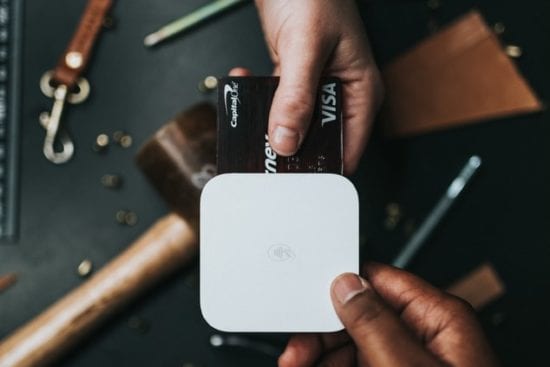Managing financial risk in business
Tony Robbins often says, “Business is a sport for gladiators, not the faint of heart,” and nowhere is this more true than the topic of financial risk. Everyone encounters financial risk in their lives, but business owners and entrepreneurs typically have higher risk tolerance. That doesn’t mean you’re entirely worry-free. It’s important to be aware of the risks, but don’t let them debilitate you.
You can learn how to reduce financial risk in business and begin a cycle of success that will lead to amazing accomplishments.
What is financial risk?
Financial risk is the danger that an investor or stakeholder will lose money in a financial transaction. It’s a hazard that applies to many different scenarios, including government entities, financial markets and corporations. Individuals contend with financial risk when they make investments, take out loans or quit their jobs. Financial risk is all around us – but it increases for business owners. If you’re a small business owner, you’ve probably invested a lot of your own money into your company, in addition to accepting outside capital. Your financial risk is higher than others.
It’s normal to worry about financial risk management. The Tony Robbins 2018 CEO Confidence Index found financial fear was the number one stressor for business owners, with nearly 45% choosing this category. The second biggest concern was competition – and it was far behind, at only 23%.
The good news is that you can learn how to manage financial risk in business. Making small changes will bring you big results, because as Tony says, “You only have to be 2 millimeters more than everybody else and get everything.”
Types of financial risk
Financial risk in business can be thought of very broadly as two types: internal risk and external risk. Internal risk results from poor management that leads to flawed operational processes and an inability to grow. External risk comes from competition, the overall market and changing customer needs.
Operational risk
Is one type of internal risk, and includes scenarios like employee fraud, retention issues and flawed business models. It results in higher costs, lower production and other ROI issues. It’s specific to the company rather than being part of a larger market trend.
Credit risk
Is the chance that a business or business owner won’t be able to pay its debts. This affects business owners in several ways: those with high credit risk will pay higher interest rates and have more trouble securing loans. If the loans are not paid off, a business owner’s credit risk goes up.


Market risk
is an external financial risk that simply means changing conditions in the market, including in consumer behavior and the existence of competitors. Business owners must keep a close eye on this type of risk.
Liquidity risk
takes into account how quickly and easily a company’s assets can be turned into cash. If a company cannot pay off its short-term debts with its assets, it has a high liquidity risk.
Financial risk in entrepreneurship differs slightly from more established businesses. When your company is in the infancy phase, you’re even more worried about finances than the average business owner. You’ve left your day job and taken the plunge into an uncertain future. Day-to-day cash flow may be insecure, and you may not have funds to buy basic supplies. Financial risk management is all the more essential at this stage.
How to reduce financial risk in business
The first consideration when you are starting a business is capital. There are many types of capital and where your capital comes from can greatly affect your financial risk. According to renowned marketing expert Jay Abraham, one type is the most important: relational capital.
Relational capital means leveraging your relationships in order to maximize their benefit to you. It does not mean taking advantage of people. Relationship mastery involves a give and take in which each party provides a benefit to the other. Relational capital simply means knowing how to cash in on those benefits. “Something like 40% of the business that big corporations do is done with partnerships, with collaborations, with co-marketing, co-ventures, everything from research to selling,” he says. The end result is the same: you expend fewer resources for marketing, advertising and more, thus increasing your ROI. This is smart financial risk management.
Once your business is up and running, you must learn how to read financial statements. Keith Cunningham, a businessman, author and financial expert, puts it simply: “If you can’t read the scoreboard, you don’t know the score.” Even if you have the budget to hire an expert to do the majority of the number-crunching, financial literacy is a key skill for any business owner. You’re the expert in your company and you play a vital role in avoiding financial mistakes and loss.
Reading your financial statements will also help you find areas that you can optimize. This is where the “2 millimeter rule” comes into play. You don’t need to make huge changes to your business model to reduce financial risk. Document your current processes and results in each area of your business where you’d like to see growth. You can then identify your biggest challenge areas and create SMART goals to make specific improvements. Measure and readjust as needed, and you’ll soon see massive results from these small changes.
“Most individuals work much harder to hang on to what they have than to take the necessary risks to shoot for their dreams,” says Tony . As a small business owner or entrepreneur, you’re one of the rare few that is shooting for your dreams. But you don’t have to “fly blind.” Learn more about goal setting and how to manage financial risk in business with Tony in-person at Business Mastery.
Ready to learn all about financial risk?
Learn how to identify and conquer financial risk with Tony Robbins’ 7 Forces of Business Mastery free content series.